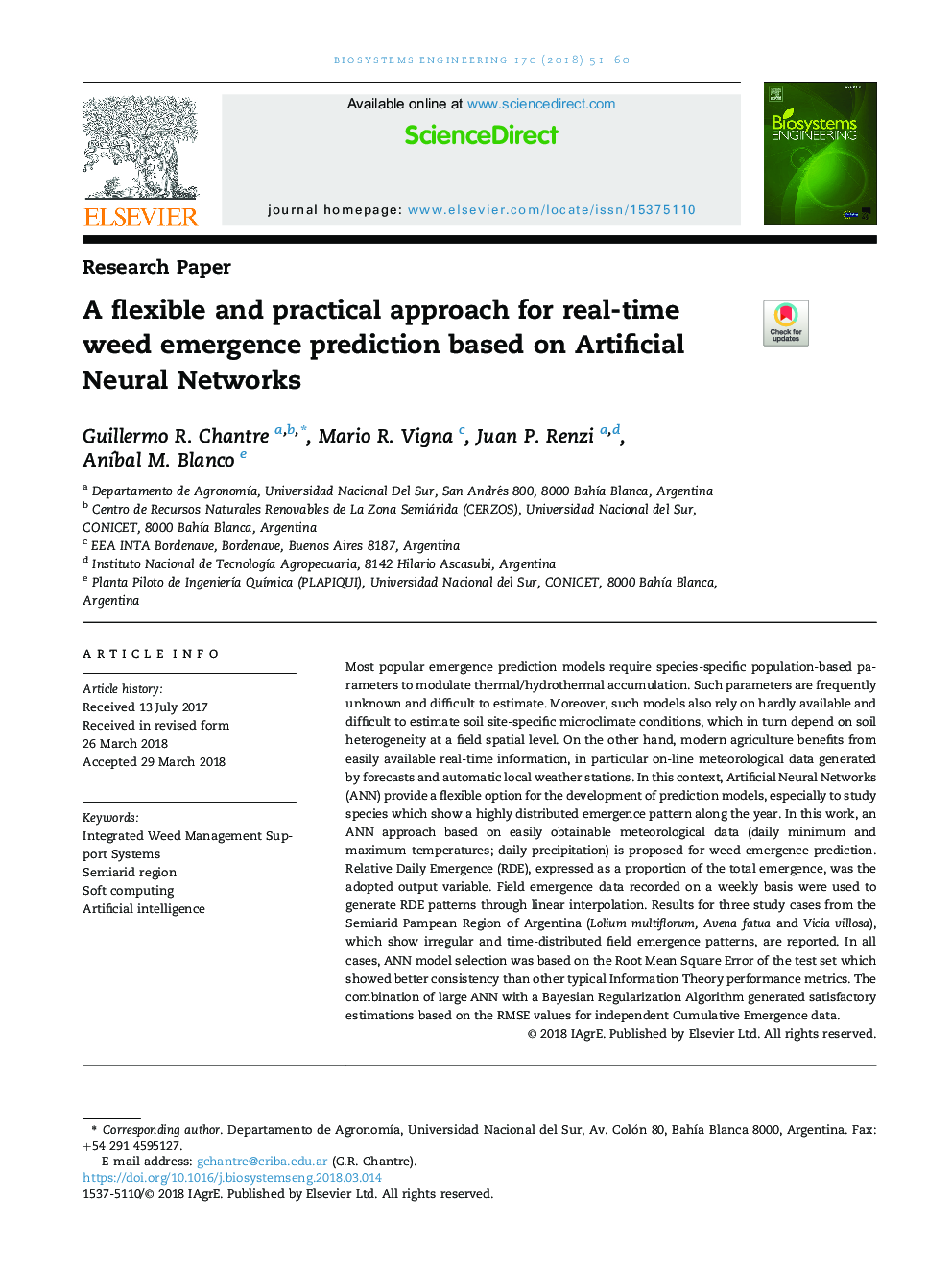| کد مقاله | کد نشریه | سال انتشار | مقاله انگلیسی | نسخه تمام متن |
|---|---|---|---|---|
| 8054704 | 1519491 | 2018 | 10 صفحه PDF | دانلود رایگان |
عنوان انگلیسی مقاله ISI
A flexible and practical approach for real-time weed emergence prediction based on Artificial Neural Networks
ترجمه فارسی عنوان
یک رویکرد انعطاف پذیر و عملی برای پیش بینی وقوع علف های هرز در زمان واقعی بر اساس شبکه های عصبی مصنوعی
دانلود مقاله + سفارش ترجمه
دانلود مقاله ISI انگلیسی
رایگان برای ایرانیان
کلمات کلیدی
سیستم های مدیریت یکپارچه علف های هرز، نیمه دولتی، محاسبات نرم، هوش مصنوعی،
موضوعات مرتبط
مهندسی و علوم پایه
سایر رشته های مهندسی
کنترل و سیستم های مهندسی
چکیده انگلیسی
Most popular emergence prediction models require species-specific population-based parameters to modulate thermal/hydrothermal accumulation. Such parameters are frequently unknown and difficult to estimate. Moreover, such models also rely on hardly available and difficult to estimate soil site-specific microclimate conditions, which in turn depend on soil heterogeneity at a field spatial level. On the other hand, modern agriculture benefits from easily available real-time information, in particular on-line meteorological data generated by forecasts and automatic local weather stations. In this context, Artificial Neural Networks (ANN) provide a flexible option for the development of prediction models, especially to study species which show a highly distributed emergence pattern along the year. In this work, an ANN approach based on easily obtainable meteorological data (daily minimum and maximum temperatures; daily precipitation) is proposed for weed emergence prediction. Relative Daily Emergence (RDE), expressed as a proportion of the total emergence, was the adopted output variable. Field emergence data recorded on a weekly basis were used to generate RDE patterns through linear interpolation. Results for three study cases from the Semiarid Pampean Region of Argentina (Lolium multiflorum, Avena fatua and Vicia villosa), which show irregular and time-distributed field emergence patterns, are reported. In all cases, ANN model selection was based on the Root Mean Square Error of the test set which showed better consistency than other typical Information Theory performance metrics. The combination of large ANN with a Bayesian Regularization Algorithm generated satisfactory estimations based on the RMSE values for independent Cumulative Emergence data.
ناشر
Database: Elsevier - ScienceDirect (ساینس دایرکت)
Journal: Biosystems Engineering - Volume 170, June 2018, Pages 51-60
Journal: Biosystems Engineering - Volume 170, June 2018, Pages 51-60
نویسندگان
Guillermo R. Chantre, Mario R. Vigna, Juan P. Renzi, AnÃbal M. Blanco,
